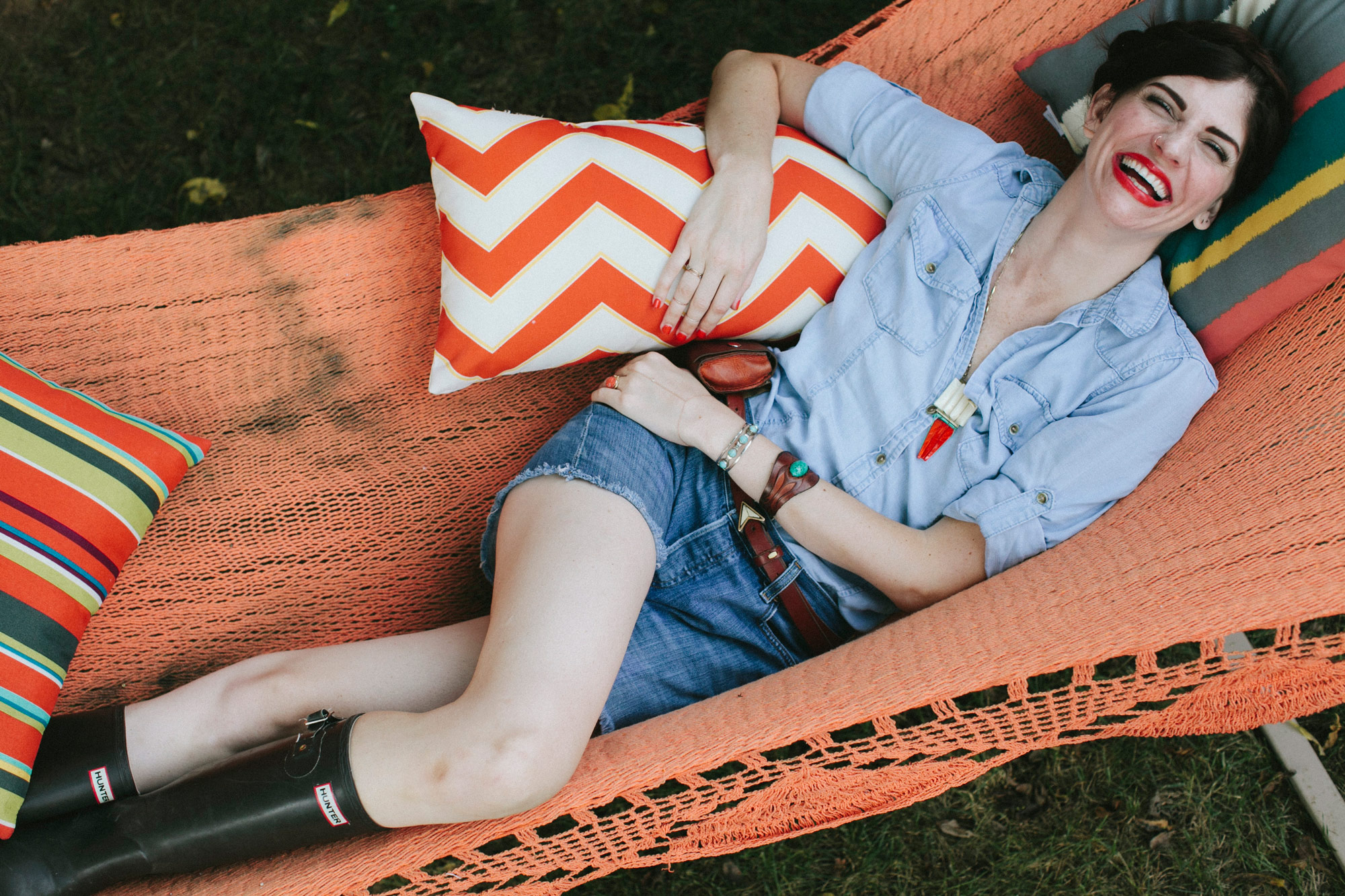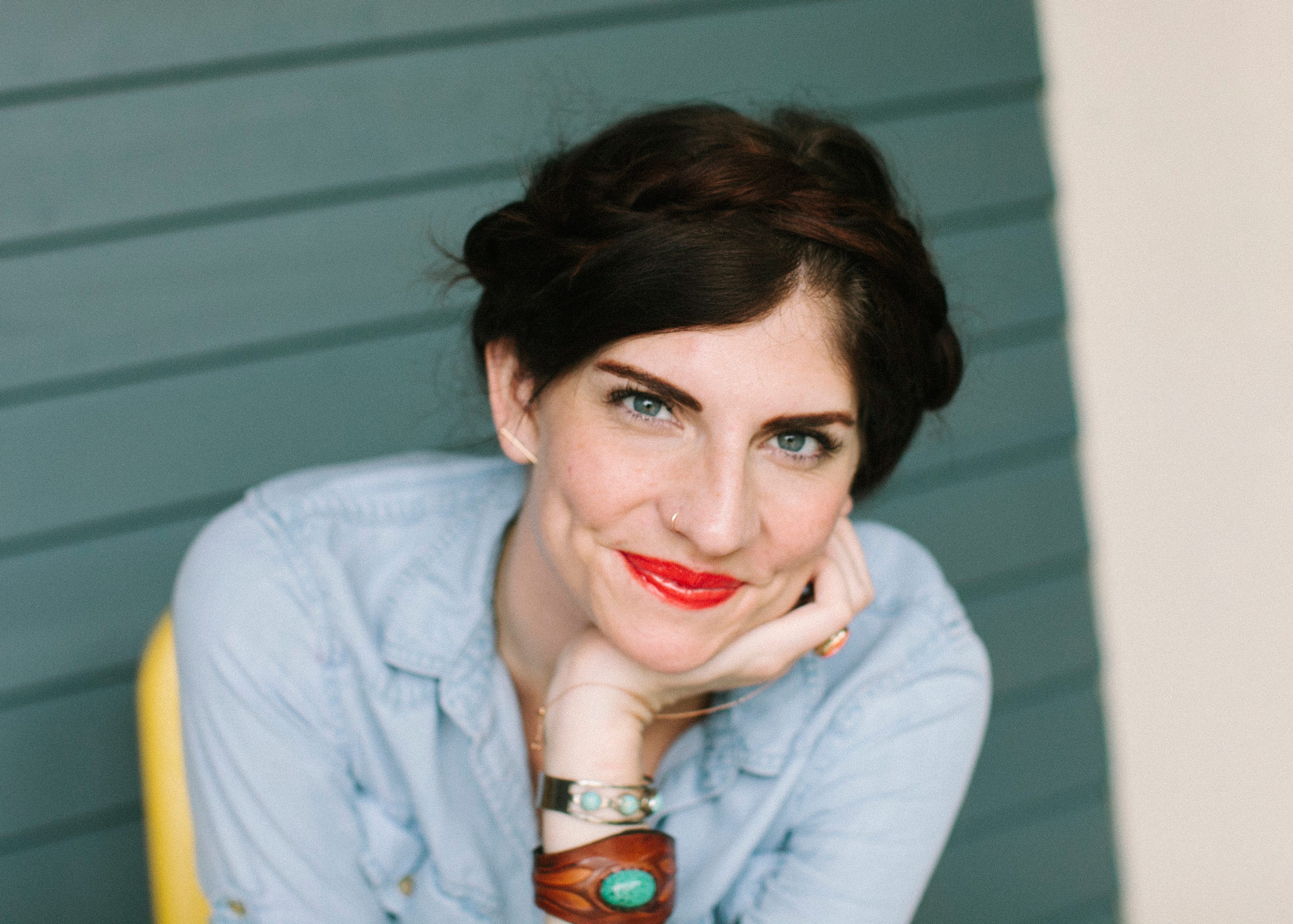
- Interview by Tina Essmaker October 14, 2014
- Photo by Sarah Barlow
Ruthie Lindsey
- designer
- entrepreneur
- stylist
Ruthie Lindsey is a Nashville-based interior designer, stylist, and creative director whose work been featured on Apartment Therapy and Design*Sponge. She’s hosted dinner parties for Kinfolk, Free People, and others, and the artwork for Taylor Swift’s Red album was photographed in her home. Beyond work, Ruthie speaks and shares about living a rich, beautiful life in the midst of brokenness and pain.
Tina: What has been your path to what you’re doing now?
I grew up on a farm in South Louisiana in a noncreative household. My parents met in New Orleans, but they moved to the country because my grandfather had some land out there. My dad farmed the same way his Amish friends did, so everything was old-school: he plowed our garden with a mule; we kept chickens, cattle, horses, and donkeys; and we raised Llewellin Setters. It was real country. (laughing)
School was hard for me when I was growing up. It did not come naturally, and I was the worst student. I didn’t know what I was good at; all I knew was that I liked people. Even though I wasn’t raised in a creative home, I remember loving the arts. I appreciated all mediums, from painting to music, but I didn’t think for one second that I could do anything with them.
I was a sweet kid and bebopped my way through life thinking that everyone was genuinely happy and life was generally good. I have moments when I look back at my younger self and think, “That sweet girl didn’t have a clue. She was so blissfully ignorant.” There are times when I think it would be nice to have a break from everything, but I wouldn’t choose to go back to being that girl. I see the world through a clearer lens now. I see the brokenness in people, and I feel it deeply, but I also see beauty so much clearer than I ever have.
The reason I say that is because I was in a freak car accident when I was a senior in high school. I was T-boned by an ambulance that was going 65 miles per hour. I broke three ribs, which punctured my lungs and caused them to collapse; my spleen ruptured; and I broke C1 and C2, the top two vertebrae in my neck. Luckily, that ambulance driver saved my life. I was put on life support at the hospital and had about a five percent chance of survival and a one percent chance of ever walking again.
I needed a spinal cord fusion and, back then, surgeons used metal wire for fusions. They took bone from my hip to fix the broken bones in my neck. I was in the hospital for about a month, but I healed quickly because I was young and healthy. I sometimes became sore with too much physical activity, but otherwise I returned to living without any residual effects. By looking at me, you can’t tell that anything happened: all of my scars are hidden under my clothes and hair. It used to be like speaking in third person when I talked about it, like it happened to someone else.
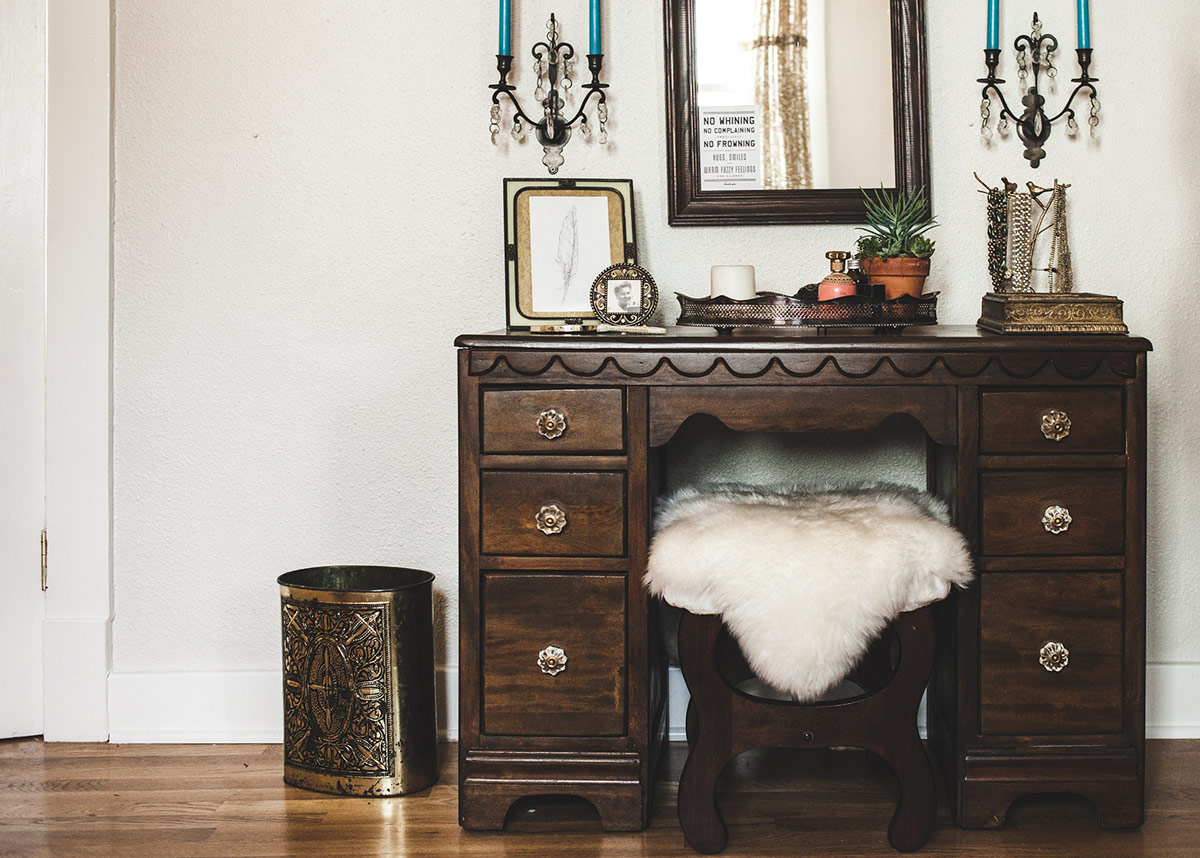
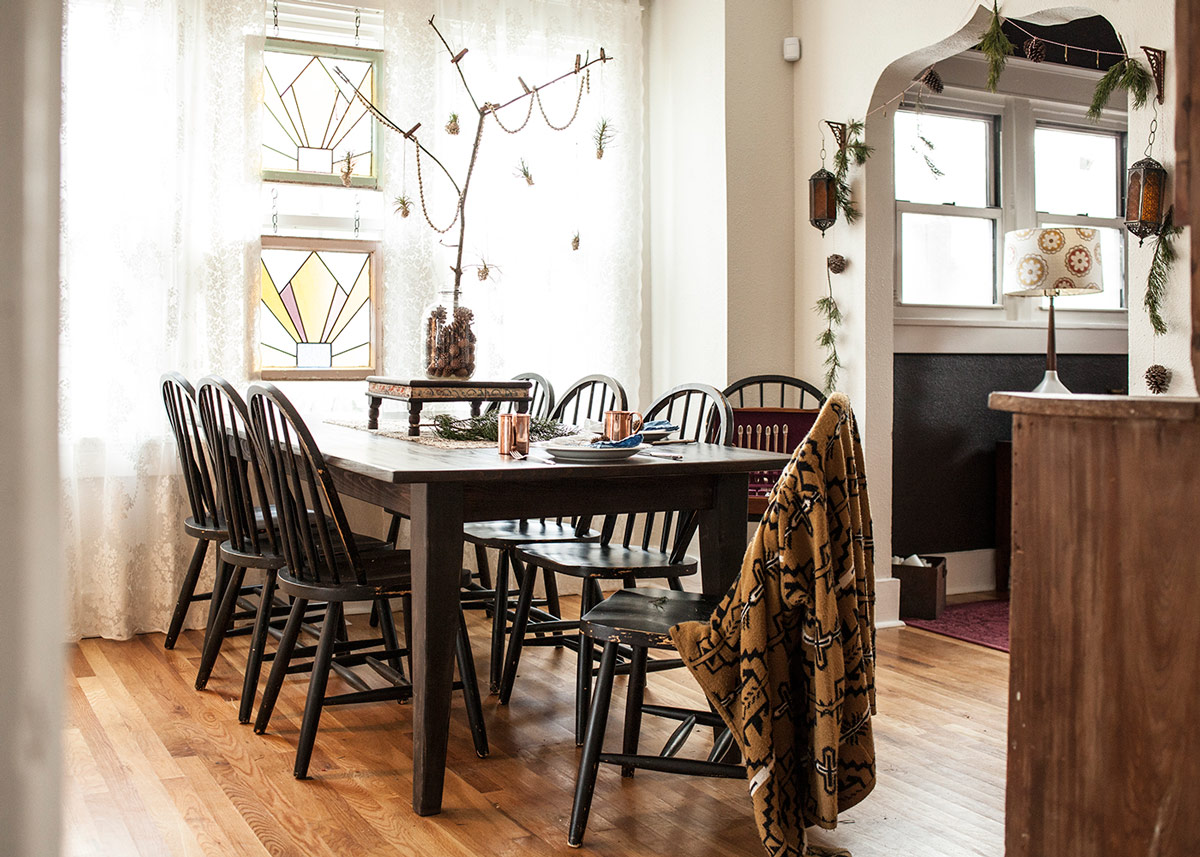
I went to college shortly after graduating, and I was still the worst student ever, but I loved being around people. I studied childhood development, but I didn’t want to be a teacher because I hated school. Then I took a lot of social work classes, but I couldn’t be a social worker either because my heart couldn’t take the intensity of it. After college, I moved to Nashville for a job opportunity. About a year and a half into living there, I met a wonderful musician, and we were married 10 months later.
About a year into my marriage, I began having debilitating pain. I experienced an electric shock shooting up my neck, and it was so intense that it made me feel like I was going to pass out or vomit; afterwards it left me with a bad migraine. It was incredibly scary, so I started going to different doctors for MRIs. Every time the doctors showed me the films, there was a little black spot where the magnet in the MRI machine had interacted with the metal wires in my neck. The doctors would say, “That’s the magnet in the machine interacting with the wire from your fusion,” and they would look at everything around it and say, “Everything looks fine.” I tried different types of therapies for my pain, but nothing helped. I felt hopeless and scared. I wondered, “Is this my life now? Am I going to hurt every second?” My pain eventually became so debilitating that I had to stop working.
After four years of dealing with pain and seeing different doctors—all of which I had to pay for out-of-pocket—I had an x-ray that revealed that one of the wires used for the fusion in my neck had broken and was piercing my brain stem. As it turns out, doctors don’t use wires anymore because they can break—it’s super rare, but it happens. After discovering the broken wire, I was told that I needed to have a crazy surgery to remove it; if I didn’t, then I would eventually become paralyzed. The doctors were surprised that I wasn’t already paralyzed. Unfortunately, the corrective surgery had a high risk of resulting in paralysis. I needed to have the wire removed, but all of the doctors had a different idea of how it should be done because no one had ever performed a surgery like that before: I’m still the only person in the world who has ever had that happen.
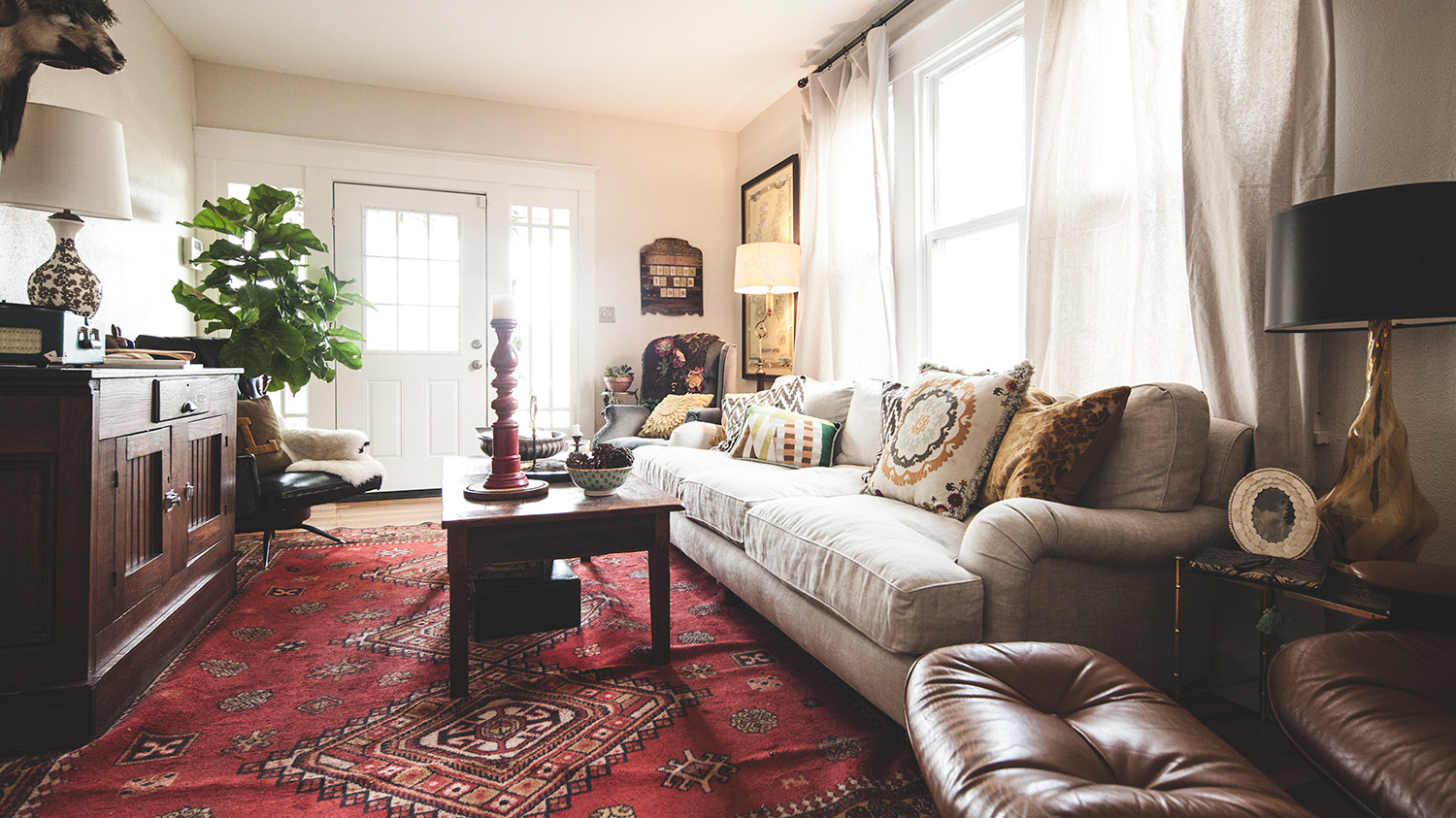
Wow! I couldn’t imagine. What happened next?
A few weeks after the diagnosis, my dad told my mom and my godfather that he was going to sell our farm if he needed to so that I could have the surgery. One day, he went to visit some of our Amish friends and was planning to come visit me on his way home. But that night, in a freak accident, he fell down a flight of stairs and passed away.
What happened next was a situation where beauty came out of something really awful. My godfather set up a medical fund for me in my father’s honor, and people came out of the woodwork to donate to it. I can’t tell you how many people said to me, “Your dad paid my tuition,” or, “Your dad bought me a prom dress,” or, “Your dad fixed my roof.” I wish everyone could have known him; he loved people so well. Every day, he told my brothers and I: “I love you so much. Remember your manners, and always look out for the little guy.” He wanted us to notice people who others might miss, and to love and care for them. Because he lived his life in that way, people came from all over to help me have my crazy surgery. The doctors were able to repair my neck, and I am able to walk. My daddy took care of me even after he was gone.
Meanwhile, as a way to check out of all the trauma and heaviness that was happening around me, I began decorating my house, room by room. I wanted to walk in my front door and have it feel like a hug: warm, inviting, and beautiful. I wasn’t thinking, “Oh, I’m good at decorating, so that’s what I’ll do.” I wanted to dedicate all of my focus to something that made me feel good. Around that time, Reid Rolls, a photographer friend from Brooklyn, came to stay with me. One day, he shot photos of my house for fun, and those photos ended up on a bunch of design websites. People thought I was a professional decorator, but I thought, “No! I know nothing! I am a joke!”
People had often assumed that I was creative because I dress kind of funky, I was married to an incredible musician, and I was surrounded by the best artists in their field in Nashville. When people asked if I was an artist, though, I’d say, “No, I do not have a creative bone in my body.” I had a limited idea of what an artist was: I didn’t paint, play music, or have some kind of product to show people. Even though I consistently said no to people asking me to decorate for them because of my chronic pain and lack of experience, people were so kind and encouraging. They told me that I am a creative, and that I’m good at design. It was wild.
As I already mentioned, the surgery was a success. It saved me from becoming paralyzed, but it resulted in a constant, burning nerve pain down the entire right side of my body. My inability to handle the pain quickly turned into a downward spiral for me. I was on a large amount of pain medication and took whatever the doctors prescribed because I didn’t want to constantly hurt.
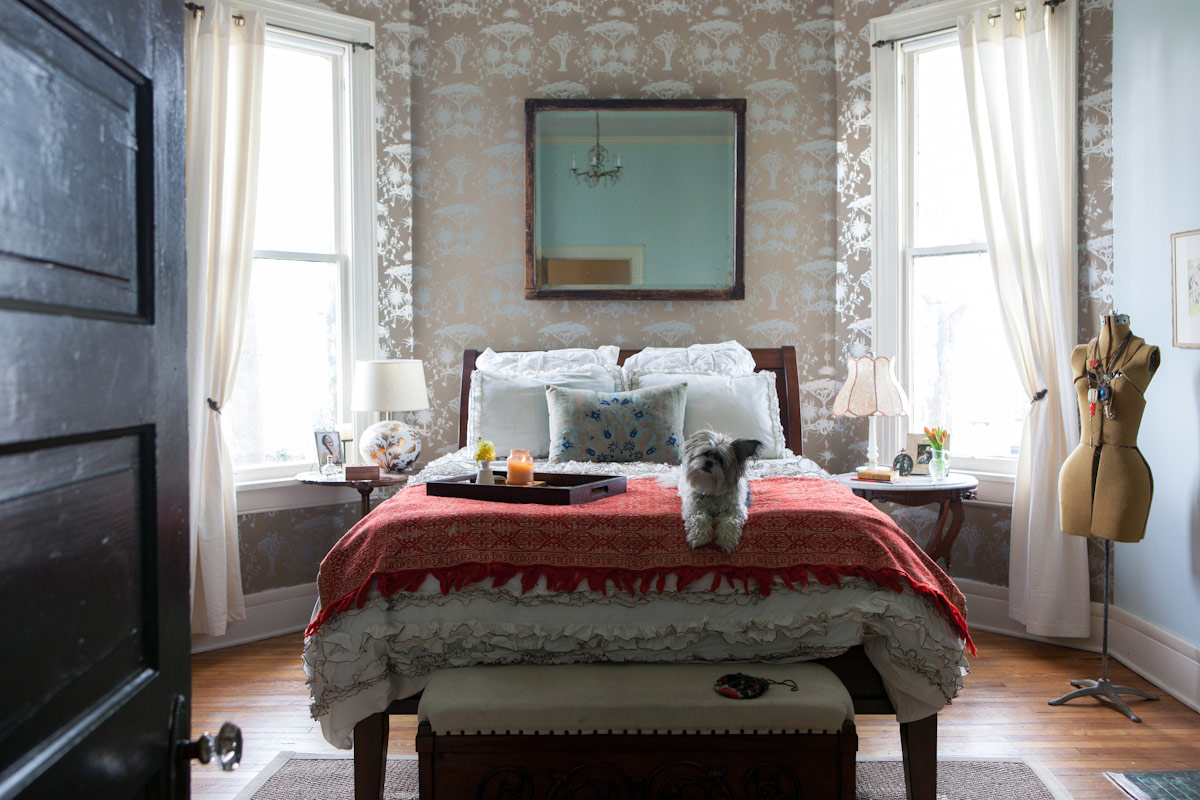
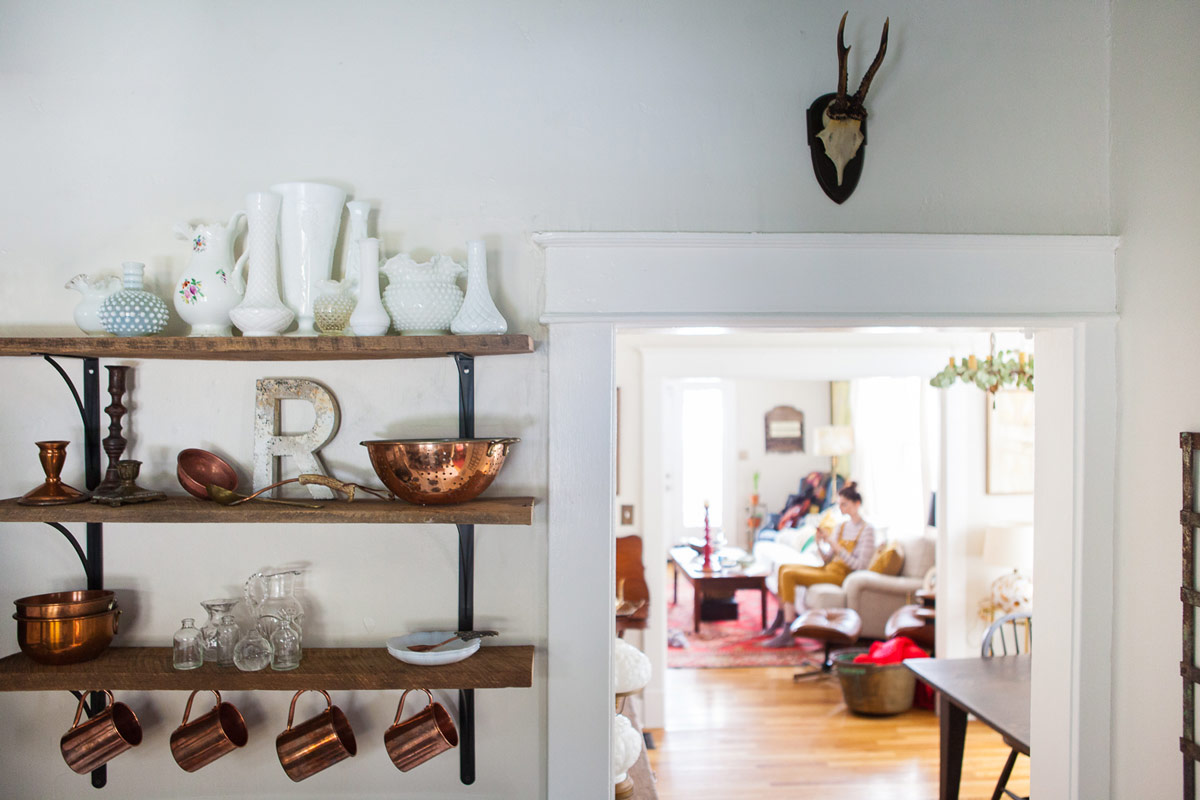
You seem to be in a much different place now. How did that happen for you?
The biggest shift happened about two years ago. While I was in the hospital for another surgery, not related to my car accident, I caught a horrible bacterial infection called C. diff. It was awful. I felt so hopeless and scared, and I was ashamed of myself because I felt like I was wasting my life. I remembered a dear friend from college who had been killed by a drunk driver. On paper, her injuries seemed less severe than what I had experienced, but she didn’t make it. She was an incredible person, and she had such an amazing effect on others. I thought, “She would be handling this so much better than I am right now. She would have been out changing the world, and I’m just laying here in bed.”
When I was released from the hospital, I stayed with my brother for two months before returning home. It was a super traumatic, dark, broken season for me. I suffered from insomnia for about 20 days and had a mental breakdown. I was already not handling my chronic pain well, my husband was away on tour, and I was literally unable to get out of bed. I was so embarrassed, because I had always held myself together as a kid; I was quite grounded, and never got into trouble. But there I was, a complete disaster. Ugh. I hit the biggest wall. I have a lot of grace for that part of myself now because nobody is born knowing how to deal with chronic pain. People think they’re supposed to handle it in the same way we handle acute pain. For instance, if you hurt your ankle, then you rest it and take it easy. But with chronic pain, you can’t do that. If you do, you end up making your constant pain worse by not living your life.
At one point, my brother told me that I could either lay in my bed and hurt all the time, or I could go out and live my life. The problem is that when I was laying in bed, all I was thinking about was my pain, and it felt so much worse. Also, the medication wasn’t helping; I was still in pain all the time. I’m a feeler, and the medication only allowed me feel the heavy, dark emotions and none of the light, beautiful ones. I told myself, “Whatever you’re doing is not working, so you need to do the opposite. Get your ass up and go do life.” With my family’s help, I weaned myself off of all my medication, which took about four months. Two months into that process, I began seeing the world so much clearer; a fog had been lifted.
Because I was leading my life with my pain, that’s how people saw me. Anytime people saw me in public, they’d ask, “How are you feeling? Are you doing okay?” I didn’t want to be that person anymore. My pain is a part of my story, but it doesn’t have to define me. I decided to actively seek out beauty in places, people, objects, and experiences around me. It was the same feeling I had when I got glasses for the first time in the second grade and yelled, “Mom! Look at the trees! Look at the clouds!” I had missed a lot because I had been in bed for such a long time. Now, I can’t see a sunset without wanting to cry: it is a gift that I’m able to be outside to have experiences like that. Now, when I leave people, I want them to feel heard, seen, and cared for—to feel special instead of feeling sorry for me.
As horrible as that time was, it was probably the best thing that has ever happened in my lifetime. I was so humbled. I thought, “You never know what someone is going through, and I have no room to judge anyone, ever.” I am not beyond anything: I didn’t know I was capable of hitting rock bottom, but now I know that I’m capable of anything.
A few weeks ago, I was visiting with a friend who works at my favorite coffee shop in Nashville. We were at a friend’s party, and I began telling him my story. Afterward, he said, “I’ve known you for over a year and had no idea you have chronic pain.” I started weeping, partly because I had been drinking alcohol, but mostly because I loved that he didn’t know me by my pain—it doesn’t define me anymore me. That made me so happy.
I watched your CreativeMornings/Nashville talk, so I know your story. In it, you talked about your marriage ending. Do you mind sharing about that?
Yes, I could tell that my marriage was coming to an end. Emotionally, I was doing much better, but I still had chronic pain. My husband and I had been thinking about adoption, and when he came back from touring, we bought a larger house in East Nashville. Unfortunately, our marriage ended about six weeks after that, and I found myself single for the first time in almost ten years. My husband had been my very first boyfriend—I had never dated anyone! (laughing).
After making mistakes and learning how to deal with past trauma, I’d been given so much grace and knew what not to do in this new traumatic situation. Before, my natural inclination was to shut down and isolate myself, watch terrible television, and not live life. But that wasn’t an option this time. If I had still been on the medication and in the same mental space, getting divorced would have taken me under; I was heartbroken and terribly fearful, but, thankfully, I was clearheaded. I let myself go home to lick my wounds and mourn my relationship. After a month or two, I thought, “How can I do this with as much grace and love as possible?” My ex-husband is a wonderful, talented man with a kind heart and I genuinely want him to be happy.
You weren’t working at that time. How did you support yourself?
I had done youth work for about four years before I began having all of my crazy health problems. Unfortunately, my pain became so debilitating that I had to stop working, so I had helped my husband with his work and toured with him and basically tried to function with my health problems.
After I got divorced, I thought, “Woman, you’ve got to figure out what you’re going to do to pay your bills now.” Before, I had been scared to say yes to any jobs because of my lack of experience. I didn’t want to screw anything up, and I was scared about whether or not my body could handle a job. But I didn’t have that luxury anymore, so I went through the motions. I went out to serve and love people as best as I could without feeling sorry for myself.
I decided to put myself out there. I made a website to say that I did decorating; shortly after that I started posting my designs on Instagram. I love bringing friends together for dinners and parties, so I’d post pictures of my hosting and decorating and flowers I’d arrange for my house. Eventually, people began asking me to decorate and arrange flowers for them professionally. I thought, “What in the world?! Yes, I would love to!” At one point, Taylor Swift even shot the artwork for her album, Red, in my home. Since then, it’s been a super organic evolution, and I just feel completely blown away that I’m able to do this for a living and that people want to work with me.
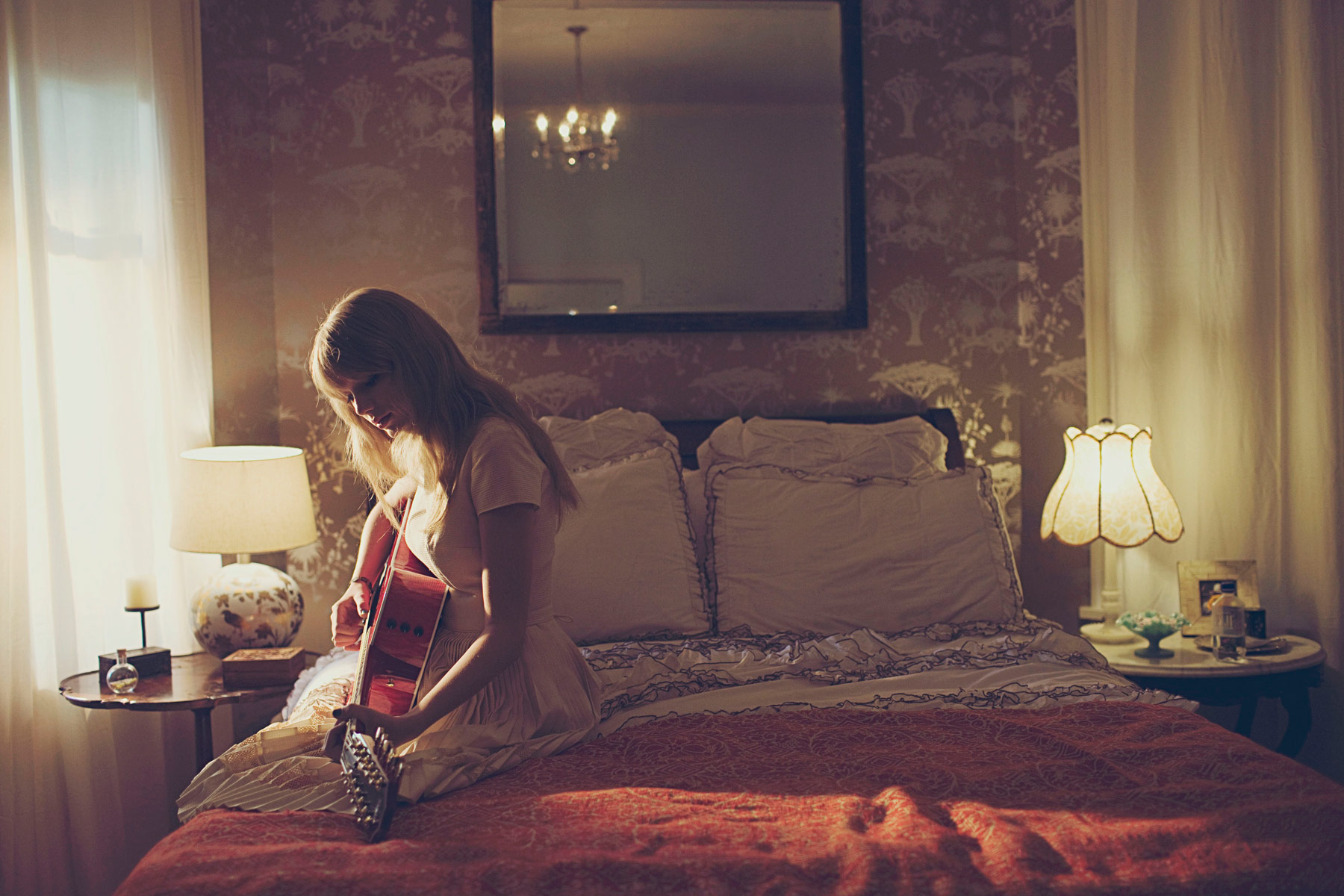
“I get daily emails from people who are experiencing extreme pain and loss…I am honored that they share their stories with me, and that makes my pain feel purposeful. If, for some reason, my crazy-ass story makes someone feel like they can get out of bed today, that’s a beautiful thing.”
What kind of work are you doing right now?
Right now, I’m finishing up decorating a loft for my friend, Mikky Ekko, and his wife. I am so giddy about it! I’ve also been doing a lot of events and shoots. I’m going to be styling a Sunday Suppers meal in Nashville at the end of the month. I’ve done some styling and designing for clothing companies, like Free People. Because I’ve been so busy, I’ve started doing consultations rather than actually decorating people’s homes. As much as I enjoy decorating a whole house, it is time-consuming and more physically difficult for me. When people reach out to me about decorating their space, I offer to go see it and then give them a vision for what it could look like, help them choose colors, and tell them where to shop for certain items. I consult for businesses opening new stores, too. My job looks different all the time!
Thank you for sharing your story with me. Have you always been this open about your journey?
A year ago, I began receiving messages from Instagram followers who were unfamiliar with everything that has happened in my life. They said, “You’re living my dream,” and, “I want your life.” I felt like I was going to vomit. I remembered laying in my bed for years looking at Facebook and feeling that same envy, wishing I was out experiencing things. I wanted to give my followers context, so I posted my story on my website. It was scary because I hadn’t ever spoken about my chronic pain or my relationship, but I felt so strongly that I needed to share my message.
All of us are longing for connection and authenticity, and what we believe will repel people does the exact opposite. My circumstances haven’t changed. I don’t live a Pollyannaish existence and pretend that my problems aren’t real, because they are. But I can live a beautiful life in the midst of pain: there is context to my joy now. My favorite quote is from the artist Kahlil Gibran, who said, “The deeper sorrow carves into your being, the more joy you can contain.” I get to experience joy on a deeper level because of everything I’ve been through.
When people are honest, real, and vulnerable, it draws others in: that’s what we’re all longing for. I get daily emails from people who are experiencing extreme pain and loss. It’s heavy and it breaks my heart, but for some reason my story connects with them. I am honored that they share their stories with me, and that makes my pain feel purposeful. If, for some reason, my crazy-ass story makes someone feel like they can get out of bed today, that’s a beautiful thing. I do get sad sometimes: it’s difficult to hurt all the time, and I miss my dad. But I also know that it has made me a more empathetic person, and it has allowed me the opportunity to connect with people.
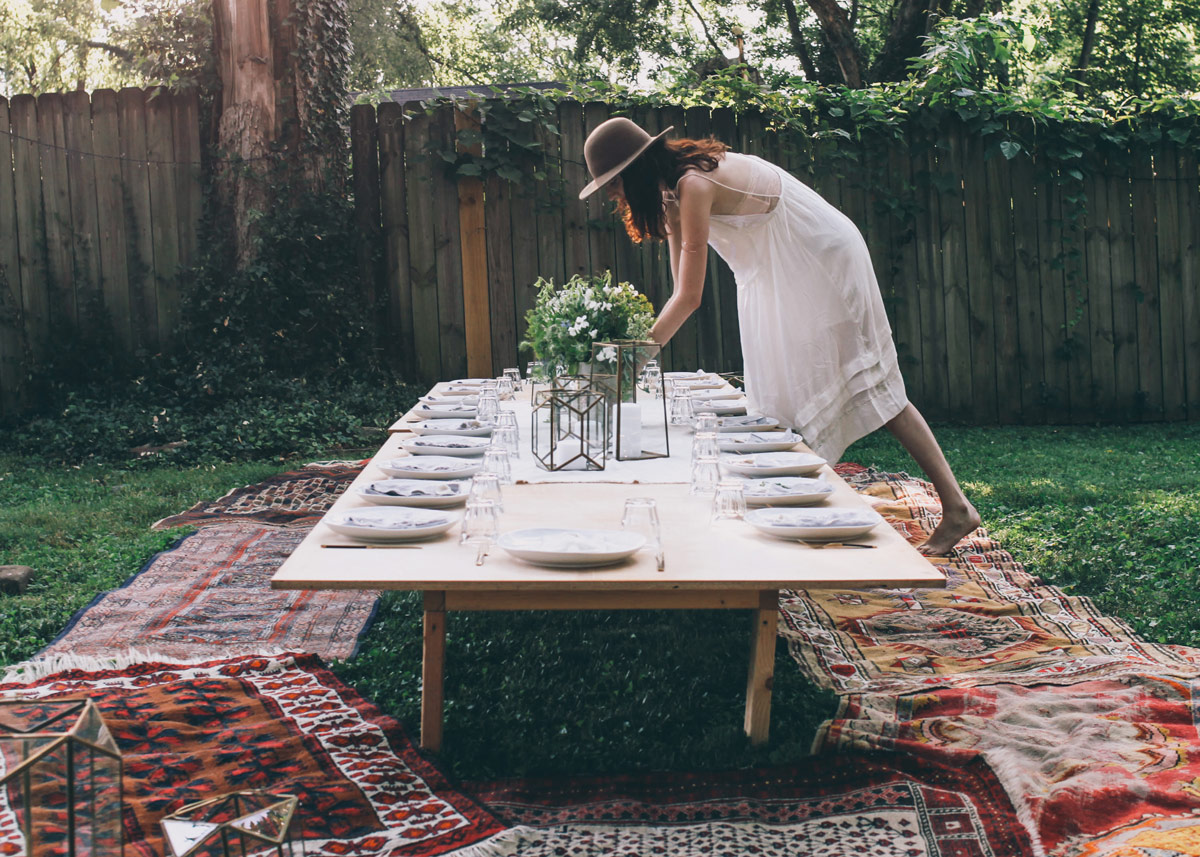
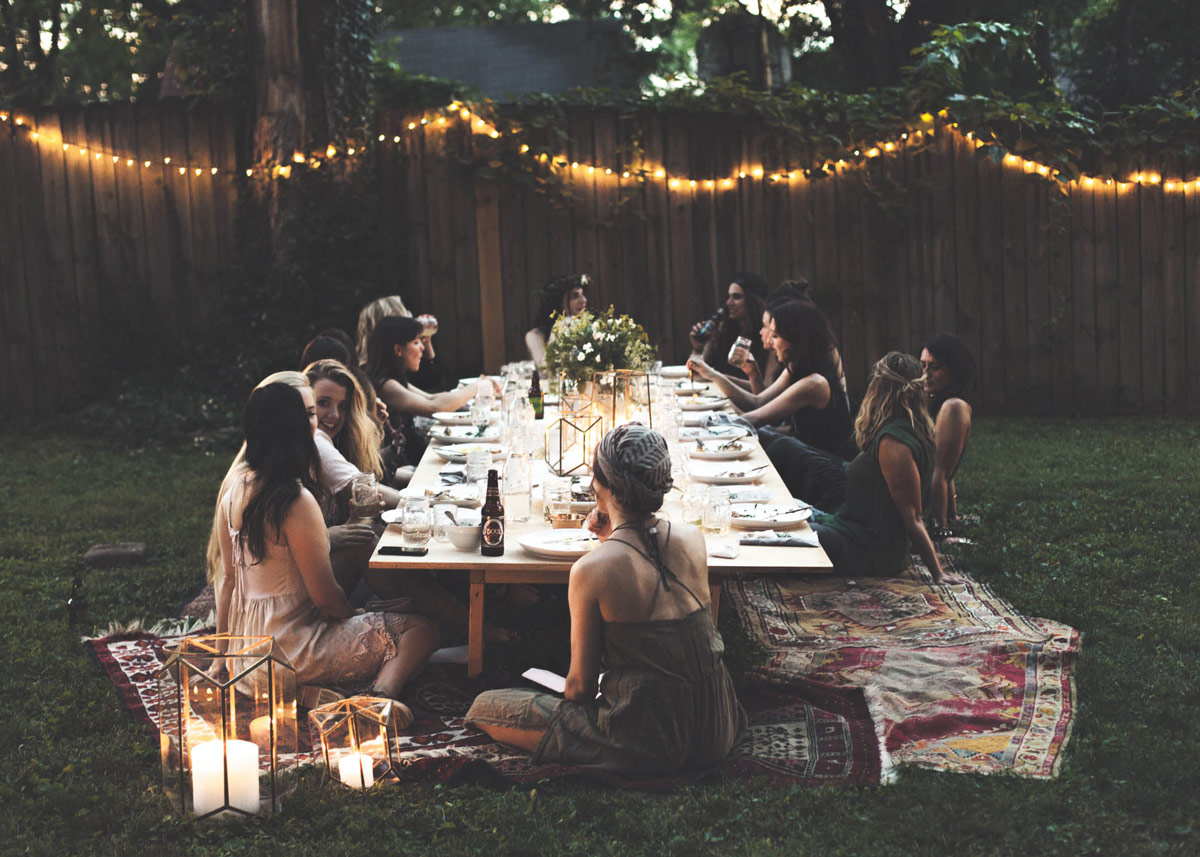
Have you had any mentors along the way?
All of my friends are mentors to me. I’m so spoiled by living in Nashville because I am literally surrounded by the most brilliant, talented humans ever. I ask a ton of questions, and I try to learn as much as I can from them.
I’ve also done a lot of work with a precious, hard-working girl named Beth Kirby, who runs the blog, Local Milk. She is very open and honest about her life—she got clean about three years ago and lives with bipolar disorder. She has had a hard life, but she turned it around and now does the most amazing and beautiful work I’ve ever seen! To do events with her is such an honor. She believed in me before I believed in myself.
Having so many encouraging people around me makes me want to do the same for others. I want to give opportunities to people who have zero experience, because that’s my life story. I feel inspired every single day by the people walking into my life. I have such an amazing community of people around me. They blow my freaking mind!
It sounds like Nashville has a lot of influence on your creativity and the work you do. Have you lived there long?
Mm-hmm. I’ve been in East Nashville for about ten years, and I love it. I’ve been talking about it so much lately that people tell me they’re planning to move there! (laughing)
I’ve only visited once, but it was many years ago.
I feel like Nashville is set apart from everywhere else. The community is so open, and I can’t tell you how many people have told me, “We feel like we’re home for the first time.” It has that kind of warmth and openness to it. Erin and Chris Ozer visited from New York this summer, and they couldn’t believe how nice everyone was—they didn’t think it was real. And when I go to New York, everyone laughs at me everywhere I go. Right now, I’m here with my friend, Jessica Zollman. Yesterday when we walked down the street, I got funny looks from people because I said hello to everyone we passed. (laughing) And when we rode the subway, I said to her, “I don’t understand—nobody will make eye contact with me!” (laughing)
One of the most beautiful aspects of Nashville is the encouraging and collaborative spirit. In bigger cities, sometimes the attitude is that you have to take care of yourself. That’s not how it works in Nashville. When people from other cities come in and try to work like that, it doesn’t fly. Our attitude is, “You can help me and I can help you, or we can both go help that person.” We understand that what we can create by helping each other will be much better than what we can do on our own, trying to claw our way to the top. We want to be a real community, look out for each other, and care for each other. Nashville has its drawbacks, just like any other city, but that sense of community is what Nashville leads with. I feel so loved there.
Do you feel a responsibility to contribute to something bigger?
Yeah. I love design and decorating, but it’s a means to an end. I hope it continues to open up opportunities to share my story and try to love people as well as I can. It might not be sustainable, but every time someone reaches out to me to get together, I try to meet with them. I don’t think I’m going to fix anyone by any means, but sometimes people just need to be seen and listened to. That’s so much more important to me than creating an event. If I host a event and people think it looks lovely, thats wonderful! But what really matters is if people feel welcome, cared for, and comfortable. That’s what I care about.
Are you creatively satisfied?
Yes, but I’m not saying that I have it all figured out. I want to constantly become better and hone my craft. Any second now, people are going to figure out that I’m a fraud! (laughing) I have so much to learn, but I am thankful for every job I’m able to do. I want to constantly live in the posture of recognizing my job as a gift and remembering that two years ago I couldn’t get out of bed. If someone wants to pay me to consult with them on what their house could look like, then that is a gift!
Are there any projects you’d like to work on, or anything you’d like to explore in the next 5 to 10 years?
A lot of people ask me what my big dreams are for my design work, but, truthfully, I don’t know. I’ve never been a business-savvy person, and I know nothing about marketing myself. The first time I had ever done anything like that—and the first time I’ve ever spoken publicly—was when I gave my CreativeMornings talk. Even though I was super nervous, it felt like a big part of why I’m here and what I’m supposed to do. I don’t know what that will look like in the future, but I would love to continue to share my story with people. That is a huge dream for me, but I didn’t know it was until I was able to do it.
People ask if I’m planning to stay in Nashville, and, if I do, I will be thrilled out of my mind because I love it so much. I also know that life changes fast, and my life could not look any more opposite from what it did two years ago. I assumed that by this point, I would have a lot of babies from all over the world, and hopefully that will still happen, but the life I’m able to live right now is so beautiful. I have dreams, and there are things I would still like to do, but I want to be open, too.
What advice would you give to a young person starting out?
On the creative end, I would tell people to ask a ton of questions and be grateful. Try to surround yourself with people who do way better work than you, and learn from them. Offer them your time and your services so you can glean as much information as possible.
That being said, what I believe gets you the furthest is being someone who others enjoy being around—that’s the bottom line. You need to care about people, treat people well, and be as loving as you can possibly be. That will get you further than anything else, period.
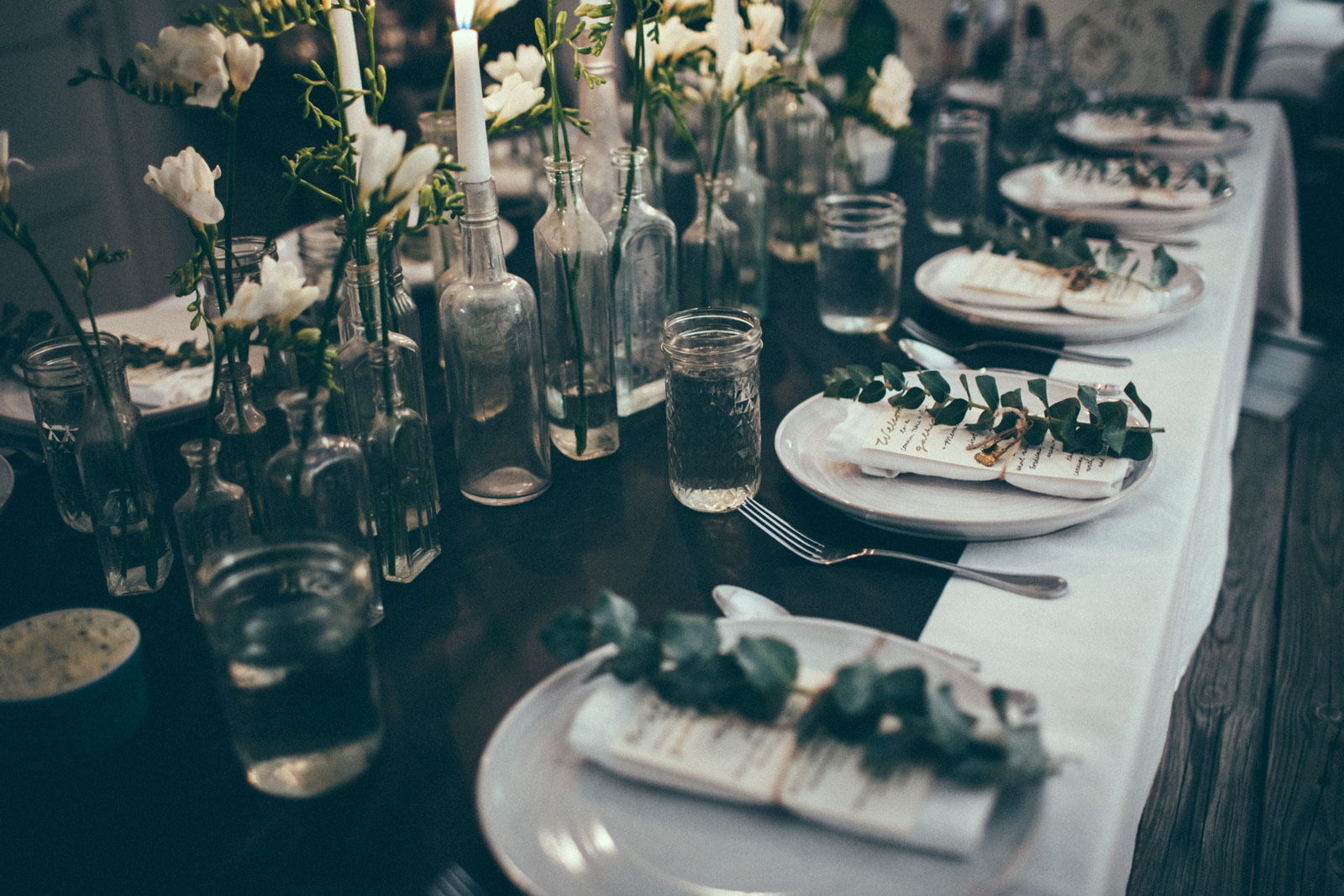
What does a typical day look like for you?
It looks different all the time. For instance, I spent most of last week shopping for my friend Mikky Ekko’s house. His wife and I ran around Nashville to all the shops I know, and I did a ton of styling in his place. Last night I hosted a dinner party, and I’m doing styling for photo shoots pretty much all week. If I’m styling a dinner party, I do a lot of prep work, like florals. Sometimes I’m sourcing props; sometimes it’s arranging flowers; sometimes it’s scouting for shoots—it totally just depends. For a lot of events, I’ll do all the coordinating and decide who needs to go where and do what. On some days, I’ll go sit at a coffee shop and respond to or send a lot of emails. Every day is different, but what is consistent is that I meet with a lot of people.
It gets a little tricky: sometimes my mind and spirit feel really youthful and energized while my body has a harder time keeping up. I struggle with that sometimes. I want to do everything everybody wants me to do, but sometimes I can’t. I’m trying to find that balance.
Have you taken any big risks along the way?
The risk was starting to say yes. For the longest time, my fear held me back because the risk was doing something that could make me hurt worse.
I remember a specific time when I was confronted with that fear. There is a rad fragrance line company called Juniper Ridge out of San Francisco. They invited me to come hiking and camping with them at Mount Tamalpais to pick wildflowers, which they use in making their fragrances. My first instinct was, “I can’t physically do that.” I couldn’t hike like that and then sleep on the ground—I would be crippled by the time we left! But I realized that it was such a great opportunity and I needed to do it anyway. Sure, I hurt worse than usual for a few days afterwards, but I still did it. The experiences I had and the people I met were so worth it. Those mountains are now ingrained in my mind as the most beautiful landscape I have ever seen. Through that experience, I met so many other rad people. Many of my biggest risks have involved talking through the negative thoughts in my head so I can say yes to opportunities I wouldn’t have said yes to in a million years.
That’s really amazing! Okay, this is the last question. What kind of legacy do you hope to leave?
I don’t necessarily care if anyone remembers me for having a good design aesthetic; if they do, that’s wonderful. I know what kind of legacy my dad left behind. He made people’s lives better, and I hope I can achieve even a tenth of it. I hope that my legacy is one of loving people well, and loving my friends well, just like my dad did.
“Having so many encouraging people around me makes me want to do the same for others. I want to give opportunities to people who have zero experience, because that’s my life story.”
